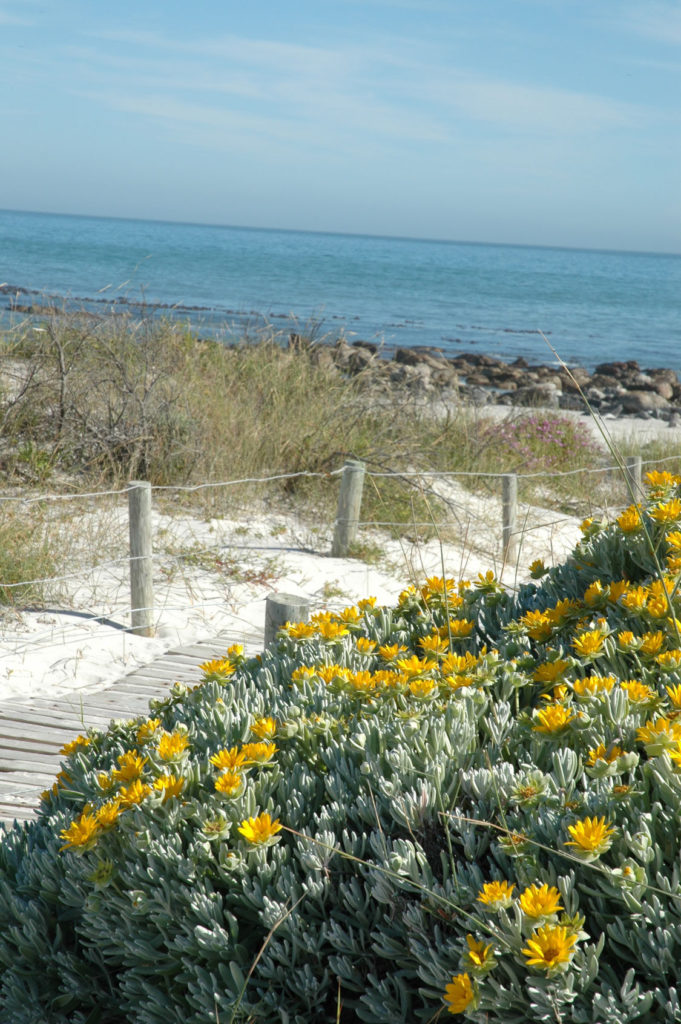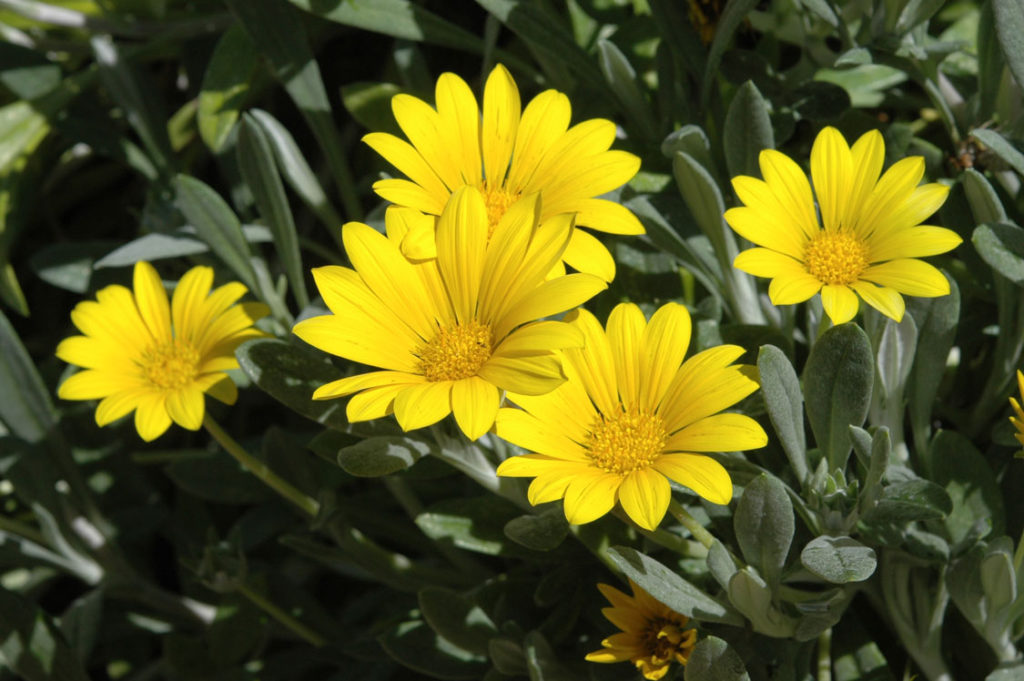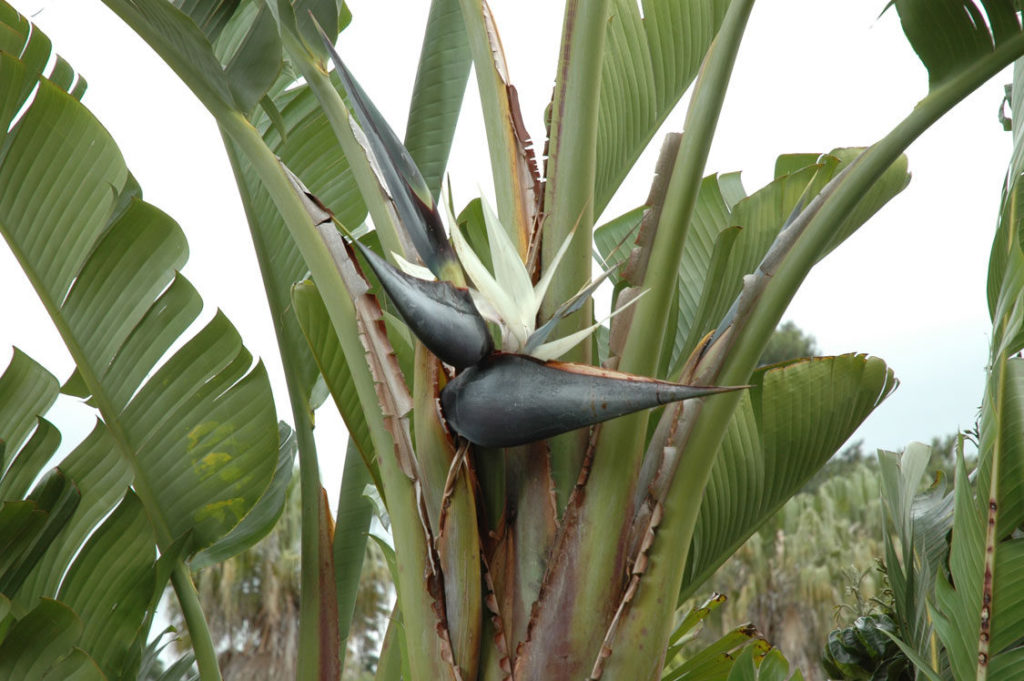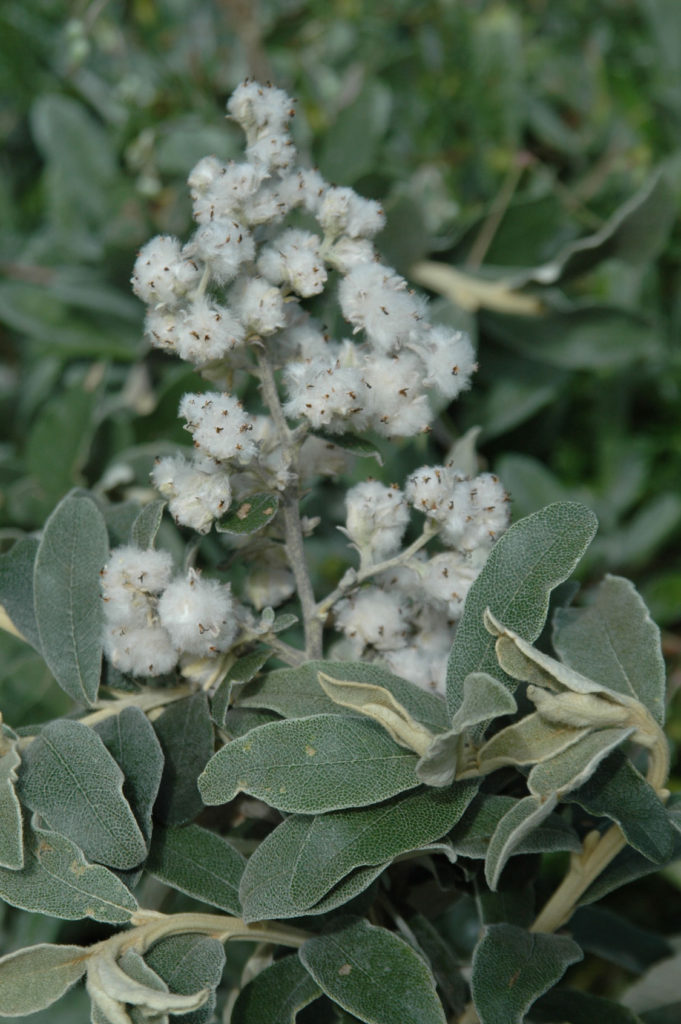Our pick of hardy plants for a low-maintenance coastal garden
Plants in coastal gardens have to withstand seasonal gale-force winds, resist the damage caused by salt-laden breezes and grow in sandy soils. Plants selected for gardens at holiday homes also need to be able to endure periods with little water. This sounds like a tall order, but there are attractive plants which fit the bill; pick the right ones and you’re sure to have success.

Members of the daisy family, like gazanias, dimorphotheca, ursinias and these Didelta carnosa grow in sandy soil, tolerate wind, help stabilise the sand and reduce evaporation.
IDEAL CHARACTERISTICS FOR COASTAL PLANTS:
- Tough, leathery grey leaves that reflect the heat and often have a protective covering of hairs. Some examples of plants with these types of leaves are the camphor bush (Tarchonanthus), coastal silver oak (Brachylaena discolor), mock olive (Buddleia saligna) and the beach salvias.
- Leaves with a shiny or waxy coating that reflect the sun, reduce surface evaporation and deflect salt. Look out for them on plants like the white milkwood (Sideroxylon inerme), coprosmas, the carissas like the num-num and amatungulu plums, and succulents like cotyledons and aloes.
- Tiny needle-like leaves such as those found on buchus, coleonemas (confetti bush) and the fynbos ericas whose leaves roll up to reduce evaporation.
RELIABLE PLANT CHOICES
1. TRAILING GAZANIA (GAZANIA RIGENS)

Gazanias are useful spreading groundcovers for coastal gardens as they are both wind and salt tolerant. Not only do they cover the sand quickly, preventing it from being blown away they help reduce evaporation. Their cheerful bright yellow or orange flowers add colour from midwinter well into summer. Some varieties have dark green leaves, while G. rigens var. uniflora (pictured) has appealing grey leaves.
They are easy to grow from slips or rooted cuttings. At the seaside, they should be planted closer together than usual. Height: 20–30cm.
2. NATAL WILD BANANA OR CRANE FLOWER (STRELITZIA NICOLAI AND S. ALBA)

Strelitzia’s height and structure add an architectural element to the garden. They can tolerate a fair amount of wind especially as one plant protects the next. Their succulent roots help them survive dry periods and stabilise the soil, while birds are attracted to the nectar which drips from their ice blue and white flowers. They’re particularly good for the warmer East Coast gardens. Height: 1,5–5m.
3. WILD CAMPHOR BUSH (TARCHONANTHUS CAMPHORATUS)

Although the leathery foliage of the camphor bush may appear to be a dull olive green, the tree comes to life when the wind flips the leaves to reveal their silvery underside. It has a wonderful aroma of camphor and the creamy white sprays of flowers are followed by fluffy, cottonwool-like seed heads which birds collect to line their nests.
Camphor bushes like sun and can be clipped into a hedge or trained as a shrub or tree. Height: 3–5m.
TIPS FOR GARDENING AT THE COAST:
- Create protected pockets in the garden using reliable, hardy, wind-tolerant trees, shrubs and hedges as windbreaks as this will allow you to grow a wider range of more sensitive plants.
- Improve the water-holding capacity of the soil by digging in copious quantities of compost and then mulch.
If you’d like to see some incredible coastal plants, why not plan a trip around the coast using Afristay.com

